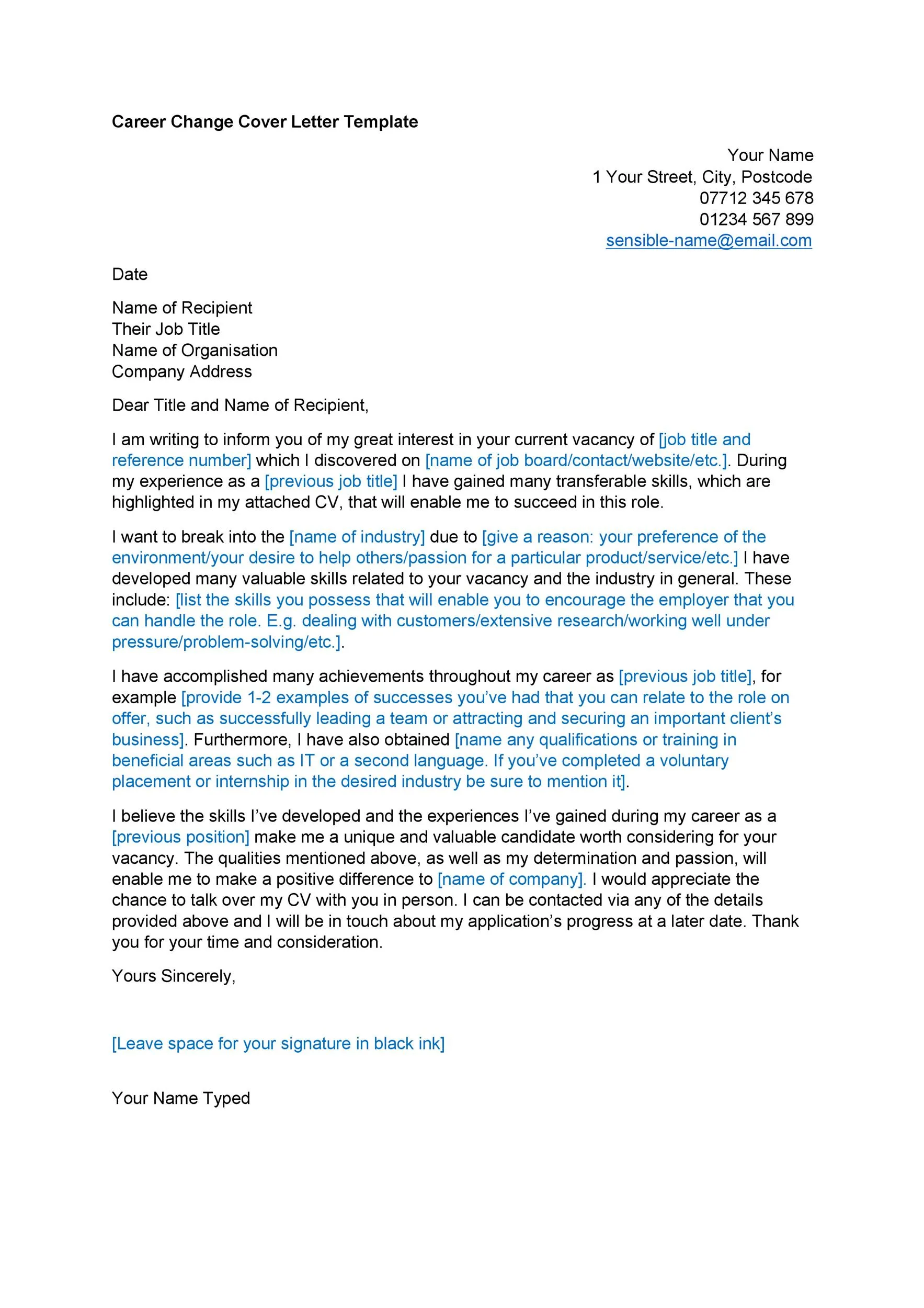Crafting Your Career Change Cover Letter
A cover letter is essential when changing careers, acting as your personal introduction to a potential employer. It’s your chance to make a strong first impression and convince them that you’re a suitable candidate despite your career transition. Unlike a resume, the cover letter provides the space to explain your motivations, highlight your transferable skills, and address any concerns the hiring manager may have about your career shift. Effectively crafting your cover letter requires careful consideration of its structure, content, and tone. Remember that this is a great opportunity to tell a story. Use it to demonstrate how your past experiences have equipped you with the skills and qualities necessary to thrive in this new role. It is a great chance to go above the usual and showcase what makes you different. Tailoring this to a specific job is key, but you can use some standard tactics to get started.
Highlighting Transferable Skills
One of the most important aspects of your career change cover letter is highlighting your transferable skills. These are the skills and abilities you’ve developed in your previous roles that are also valuable in your new desired field. Take time to identify the skills you’ve used, no matter your role. These can be soft skills such as communication, teamwork, problem-solving, and leadership, or hard skills such as data analysis, project management, or specific technical proficiencies. Provide concrete examples of how you’ve used these skills in past roles. Quantify your achievements whenever possible to show the impact you’ve made. For example, instead of saying ‘Managed projects,’ say ‘Managed multiple projects, resulting in a 15% increase in efficiency and reduced project costs by 10%’. Be sure to check the job description and match these skills to the job description. Showing that you meet the criteria is a great way to get noticed.
Identifying Relevant Experience
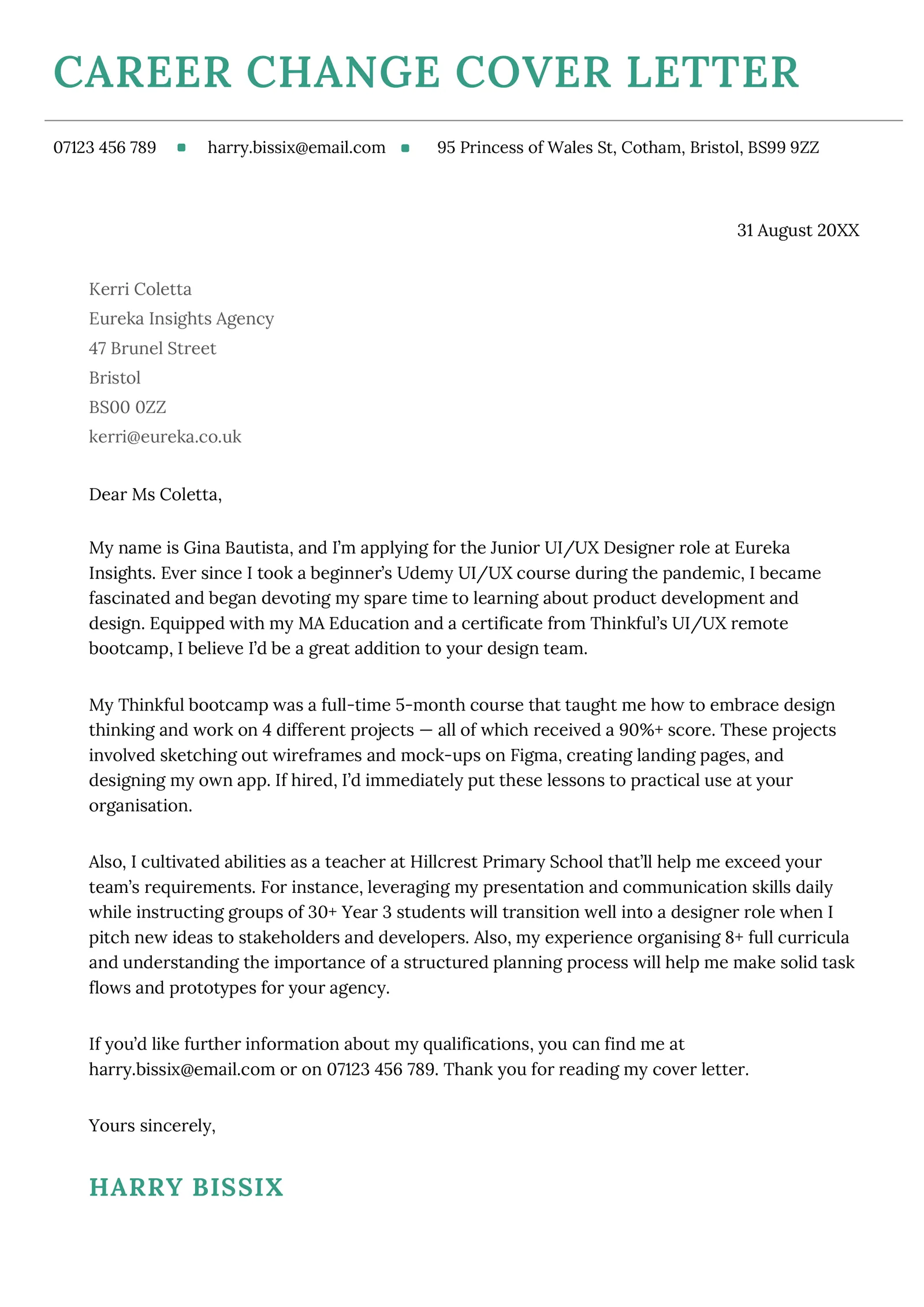
Even if your experience isn’t directly related to the new role, it’s crucial to identify and showcase relevant experiences. This might involve projects, volunteer work, or any other activities where you’ve gained skills relevant to the job you’re applying for. Think about how your past experiences have equipped you for the role. Have you led any initiatives, solved any problems, or used specific technologies? The goal is to demonstrate that you have practical experience that aligns with the job requirements. Don’t be afraid to think outside the box, and include things that may seem obvious. For example, experience as a team lead for a sports team or in your volunteer experience, depending on the job.
Showcasing Your Passion & Motivation
A cover letter is the perfect place to explain why you’re making a career change. Use this space to articulate your passion for the new field and your motivation for seeking this particular role. Explain what excites you about the opportunity, what you’ve learned, and what you hope to achieve. Demonstrate your genuine interest in the new career path and how it aligns with your values and goals. Employers are looking for candidates who are genuinely motivated and enthusiastic about the job. Explain the thought process behind your change. Consider what you’ve been learning, and what you’ve done to prepare. Show them that you are ready to go!
Addressing the Career Change Directly
Be upfront and honest about your career change. It’s important to acknowledge the transition and explain why you’re making the shift. Do this in a way that is clear and concise. Don’t try to hide it or gloss over it. Briefly explain the reasons behind your decision, and emphasize what you’ve learned from your previous experiences. Reassure the employer that you are fully committed to your new career path. Addressing the career change head-on shows confidence and self-awareness. It helps you set expectations and show the employer that you’ve considered the shift, and are ready to take it on. This shows you have thought about your next move.
Focusing on the Future and Goals
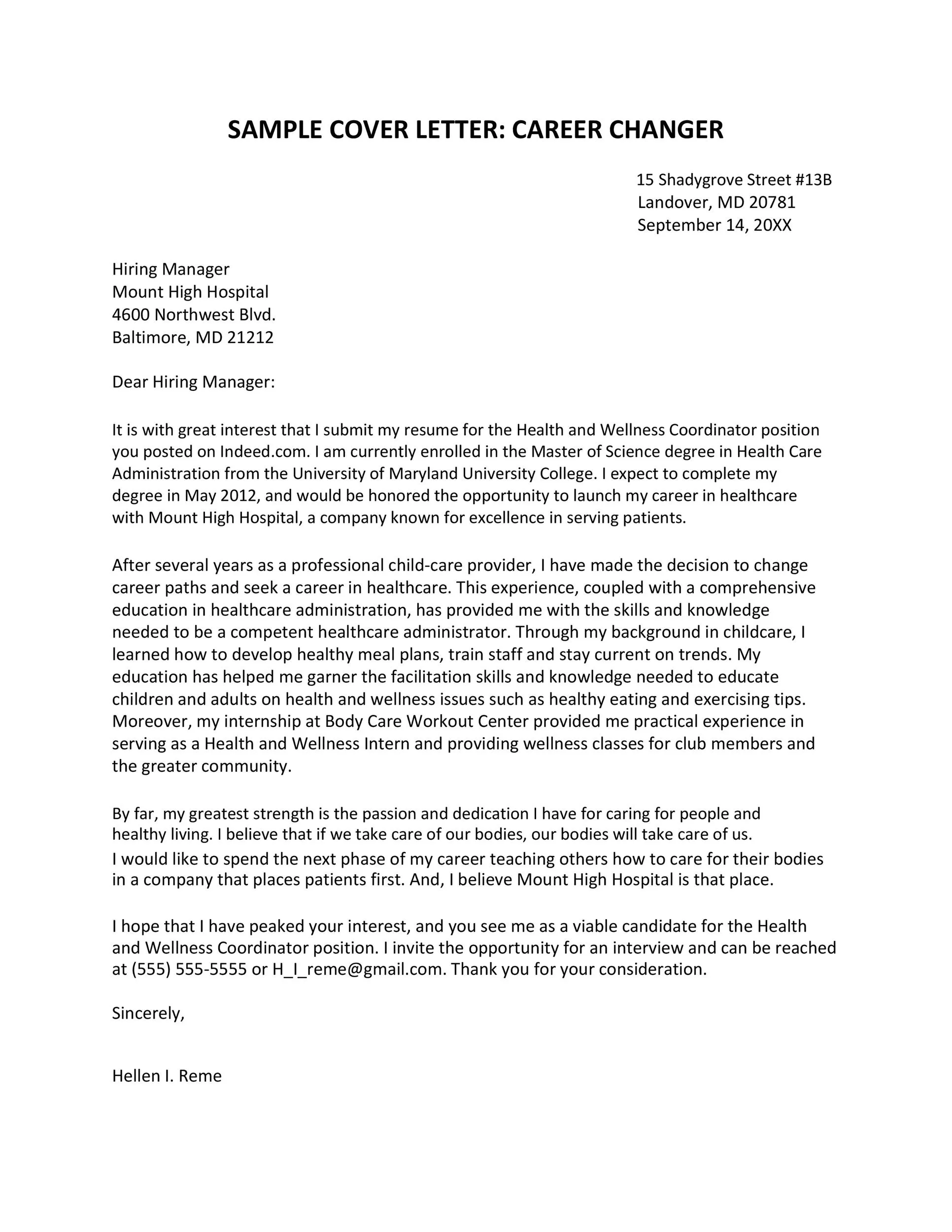
While it’s important to mention your past experiences, the cover letter should primarily focus on the future. Express your goals and how they align with the new role and the company’s objectives. Explain what you hope to achieve in the new role and what value you can bring to the organization. Focus on what you can offer the employer rather than just what you’re looking for. This demonstrates that you are a proactive, forward-thinking individual with a clear vision for your career. Show that your career change is not just about a job, but about your professional growth and development. Tailoring your goals to the job description will greatly improve your chances. Consider the job, the company, and what you’re looking for. How do these all work together?
Structuring Your Cover Letter Effectively
Formatting for Readability and Impact
Effective formatting is essential for making your cover letter easy to read and visually appealing. Use a professional font, such as Times New Roman or Arial, and maintain a consistent font size. Keep the layout clean and organized with clear headings, bullet points, and sufficient white space. This enhances readability and helps the hiring manager quickly grasp the key points. Break up large blocks of text into shorter paragraphs to avoid overwhelming the reader. Ensure the document is well-structured, with a clear introduction, body, and conclusion. Proofread the document carefully to avoid any grammatical errors or typos. This gives a good impression of your attention to detail. Ensure that the information is easy to understand and navigate.
Choosing the Right Tone and Style
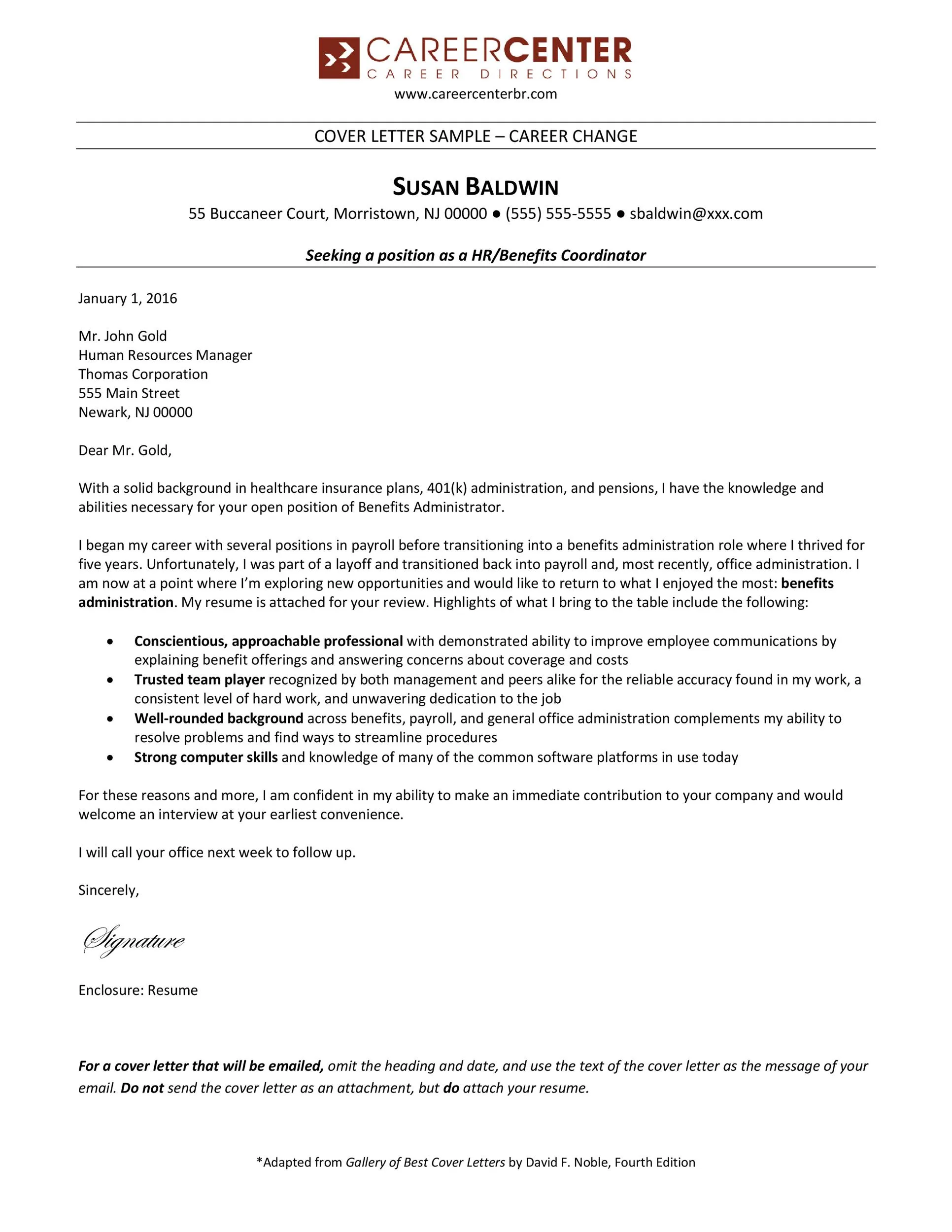
The tone and style of your cover letter should be professional, enthusiastic, and tailored to the specific job and company. It’s essential to use a tone that reflects your personality and shows your genuine interest in the role. Use positive language and avoid being overly formal or sounding generic. Show enthusiasm and passion for the new career field. Your writing should be clear, concise, and easy to understand. Avoid using jargon or complex language that might confuse the hiring manager. Proofread everything! Use active voice and dynamic verbs to make your writing more engaging. The cover letter should sound like you, while still being professional.
Keywords and ATS Optimization
Many companies use Applicant Tracking Systems (ATS) to scan cover letters and resumes for relevant keywords. To increase your chances of getting noticed, carefully review the job description and identify the key skills and keywords the employer is looking for. Integrate these keywords naturally throughout your cover letter, including in the headings, bullet points, and body text. Avoid keyword stuffing, as this can make your letter appear unnatural. Balance the inclusion of keywords with clear and compelling writing that highlights your qualifications. Use a simple font and avoid complex formatting to ensure the ATS can properly read your letter. Remember to still write to impress, and keep the keywords as a secondary focus.
Proofreading and Editing
Proofreading and editing are critical steps in ensuring your cover letter is polished and professional. Carefully review your cover letter for any spelling errors, grammatical mistakes, or typos. These errors can create a negative impression and undermine your credibility. It’s helpful to have a second pair of eyes review your letter as well. Another person may catch errors you missed. Read the letter out loud to help you identify any awkward phrasing or sentences. Ensure the letter is clear, concise, and well-organized. Proofread it multiple times, and consider using grammar and spell-checking tools to help catch any errors. Be sure to review the job description for any key phrases or words to ensure you used them correctly.
Tailoring Your Cover Letter for Each Job
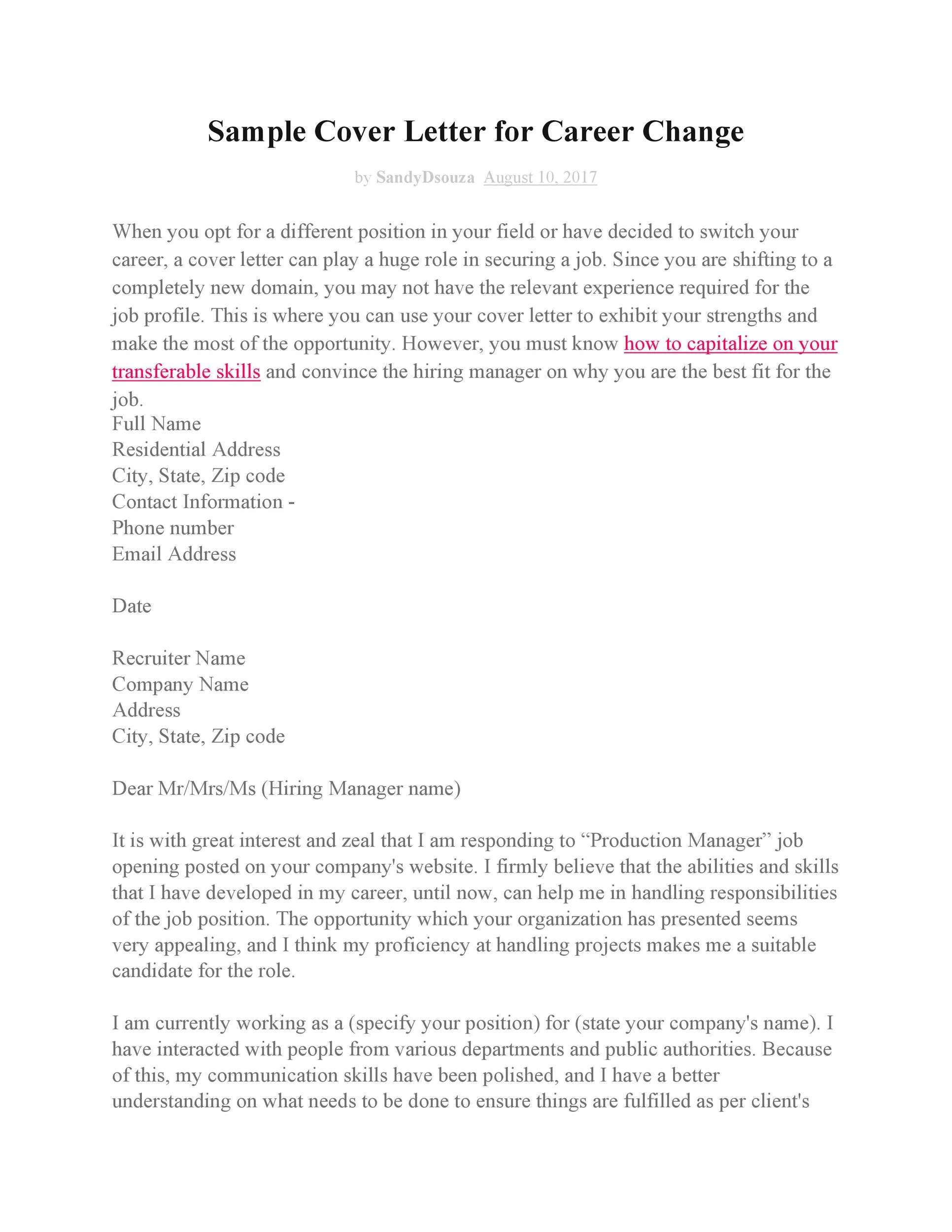
Researching the Company and Role
Tailoring your cover letter for each job is a must if you want to stand out. Before writing, research the company and the specific role you’re applying for. Understand the company’s mission, values, and culture. Review the job description carefully and identify the key responsibilities, skills, and qualifications the employer is seeking. This research helps you customize your cover letter to address the employer’s specific needs and show your genuine interest in the role. Take the time to visit their website and read any news or content. Demonstrate that you understand their values.
Customizing for Specific Requirements
Once you’ve researched the company and role, customize your cover letter to align with the specific requirements. Highlight the skills, experiences, and achievements that are most relevant to the job description. Use the same keywords and phrases the employer uses to demonstrate your understanding of the role. Address any specific requirements or preferences mentioned in the job posting. Show how your background and skills make you a strong fit for the position. Customization demonstrates your attention to detail and your willingness to put in the effort. Tailor the content to what’s requested. Follow the instructions in the job posting.
Demonstrating Value to the Employer
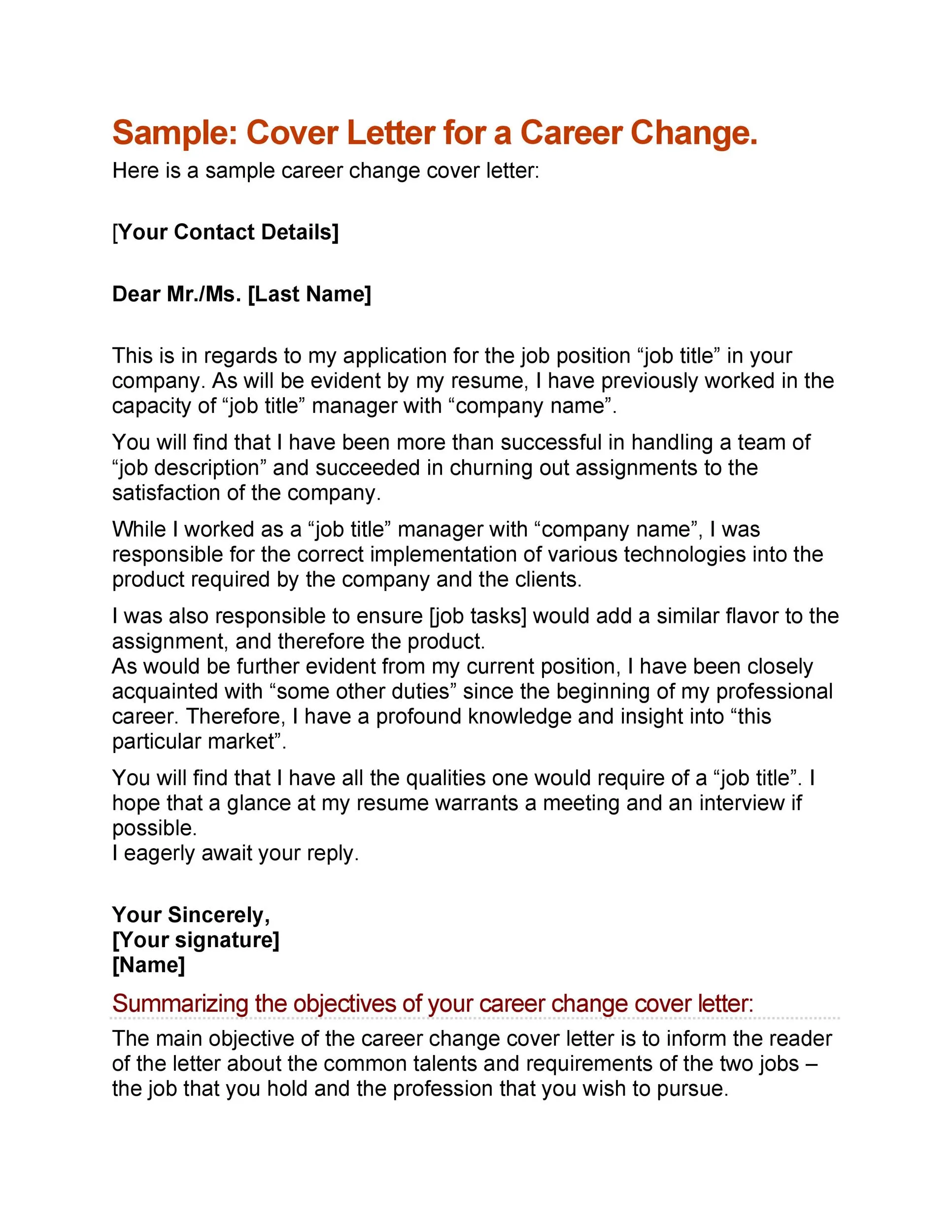
The primary goal of your cover letter is to demonstrate the value you can bring to the employer. Focus on how your skills, experience, and achievements will benefit the company. Explain how you can contribute to their goals, solve their problems, and improve their performance. Quantify your achievements whenever possible to show the impact you’ve made in past roles. Provide specific examples of how you’ve added value in previous positions. Tailor the examples to the new job. Show them that you understand their needs and that you are the ideal candidate to meet them. Showing your worth is key in setting yourself apart from other candidates.
In conclusion, writing a cover letter for a career change requires thoughtful planning and execution. By focusing on transferable skills, relevant experience, and demonstrating your passion, you can effectively showcase your qualifications and increase your chances of landing an interview. Remember to tailor your cover letter for each job and emphasize the value you can bring to the employer. With a well-crafted cover letter, you can successfully navigate a career change and achieve your professional goals.
